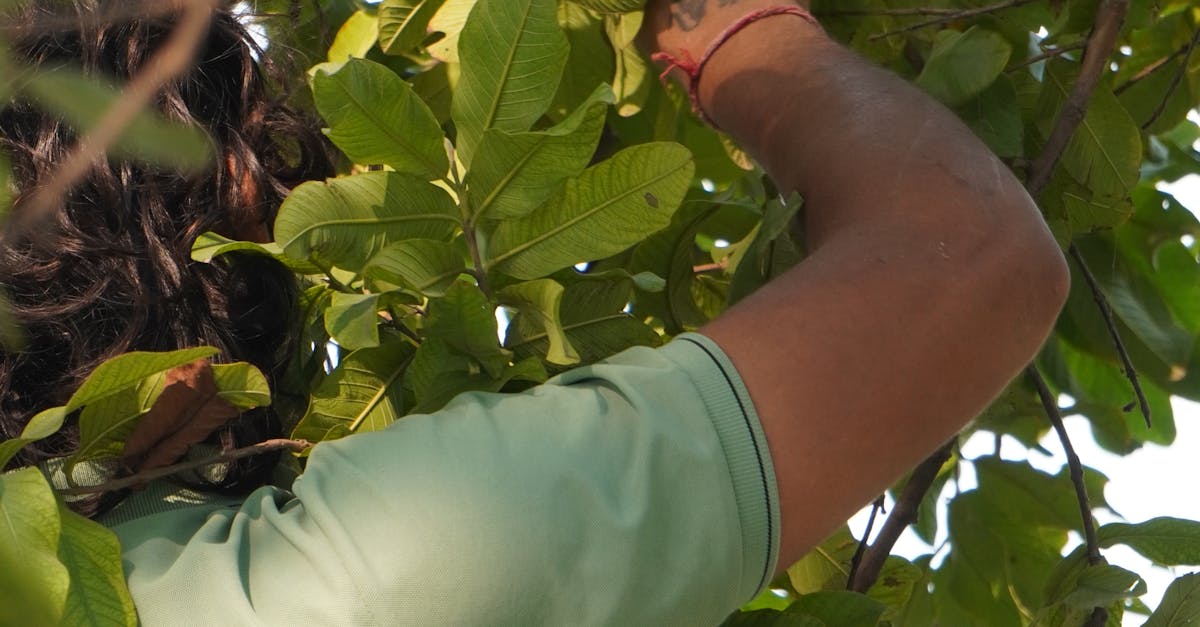
Materials Used in Tree Cabling
Tree cabling and bracing involve the use of specific materials designed to support trees and prevent structural failure. The primary materials utilized include high-strength steel cables, which provide durability and flexibility. These cables can withstand significant tension, making them effective in stabilizing weak or damaged branches. Additionally, hardware such as eye bolts, screws, and turnbuckles are essential for installation, as they secure the cables to the tree with minimal impact to its health.
In some cases, synthetic ropes made from advanced polymers are chosen for their lightweight and resistance to environmental factors. These ropes can be more discreet than steel cables and may blend better with the tree’s natural appearance. Support systems often include specialized brackets that distribute weight evenly across the structure. The choice of materials should be based on the specific needs of the tree and the environmental conditions in which it grows.
Types of Cables and Hardware
Various types of cables and hardware are utilized in tree cabling and bracing to ensure stability and support for trees. Steel cables are among the most common materials, known for their strength and durability. These cables typically come in different diameters, allowing for customization based on the size and requirements of the tree. Additionally, synthetic options such as high-strength polyester or nylon cables offer flexibility while being resistant to environmental factors.
Support systems also include hardware such as eye bolts, brackets, and pulleys designed to facilitate the attachment of cables to the tree. Eye bolts are often used to secure the cable within the tree, while brackets can help distribute the load more evenly. Pulleys might be employed in more complex configurations to manage tension and the direction of support, making tree cabling and bracing a tailored solution for various tree species and conditions.
Professional vs. DIY Tree Cabling
Choosing between professional and DIY tree cabling depends on various factors, including the complexity of the task and the size of the tree. For those with experience in tree maintenance and care, attempting to install tree cabling and bracing on smaller trees may seem manageable. Basic comprehension of tree anatomy and proper rigging techniques can facilitate the process. However, a lack of expertise can lead to improper installation, posing risks to both the tree and surrounding property.
In contrast, hiring a professional arborist ensures the job is performed with the right tools and techniques tailored to each unique situation. Professionals are equipped to assess tree health, identify weak points, and apply tree cabling and bracing in ways that optimize support while minimizing harm. Their experience allows for adjustments based on specific tree species and environmental conditions, resulting in better long-term outcomes. This approach may also alleviate the potential liability for homeowners should complications arise during a DIY attempt.
When to Hire an Arborist
Determining when to hire an arborist for tree cabling and bracing can greatly impact the health and safety of your trees. If a tree shows signs of structural weakness, has widespread disease, or is suffering from significant damage, consulting a professional is advisable. Arborists bring expertise in evaluating the specific needs of your trees. This assessment helps prevent further complications that might arise from improper cabling techniques.
Additionally, if you are unsure about the process or lack the necessary equipment, seeking help from an experienced arborist is a wise choice. Professionals can ensure that the right type of cable and bracing techniques are applied based on the unique characteristics of your trees. Their knowledge of local tree species and environmental conditions can provide invaluable insight, leading to better long-term results for your landscape.
Maintenance After Tree Cabling
After tree cabling and bracing, regular maintenance is essential to ensure the health and stability of the tree. This includes periodic inspections to check for any signs of wear on the cables and hardware. Over time, environmental factors such as wind, rain, and temperature fluctuations can affect the integrity of the installation. Therefore, assessing the condition of the system at least once a year is recommended, along with after any significant weather events.
Adjustments may also be necessary to accommodate the tree's growth and changing structural needs. As the tree matures, its branches and trunk may shift, which can lead to increased tension on the cables. If cables become too tight, they can cause injury to the tree. Proper maintenance practices involve monitoring these changes and making required adjustments to the cables and bracing systems to ensure ongoing support without causing harm.
Regular Inspections and Adjustments
Regular inspections are essential after tree cabling and bracing to ensure that the hardware remains secure and effective. Over time, environmental factors such as wind, rain, and temperature fluctuations can affect the structural integrity of the cables and their attachment points. Inspecting the installation periodically allows for the identification of any wear or damage, which can prevent potential failures that might endanger the tree or surrounding property.
Adjustments may also be necessary based on the tree's growth and any changes in its shape or structure. As the tree matures, it may exert more force on the cables, necessitating a re-evaluation of their tension and positioning. Maintaining an awareness of the tree’s health and growth patterns helps in ensuring that the cabling system continues to provide support without harming the tree in the long run. Regular attention to tree cabling and bracing will foster a healthier and more resilient tree.
FAQS
What is tree cabling?
Tree cabling is a method used to support weak or damaged branches of a tree by installing cables and hardware to prevent breakage and improve stability.
What materials are typically used in tree cabling?
Common materials for tree cabling include high-strength synthetic cables, steel cables, and various types of hardware such as bolts, brackets, and anchors designed specifically for tree support.
Can I perform tree cabling myself, or should I hire a professional?
While some homeowners may choose to attempt DIY tree cabling, it is often recommended to hire a professional arborist, especially for larger trees or more complex cabling systems to ensure safety and effectiveness.
How often should I inspect my tree cabling?
Regular inspections are important; it's recommended to check the cabling system at least once a year or after severe weather events to ensure it's functioning properly and make any necessary adjustments.
What are the benefits of tree cabling?
The benefits of tree cabling include increased stability for weak branches, prevention of tree failure, and the potential to extend the life of the tree by managing its structural integrity.
